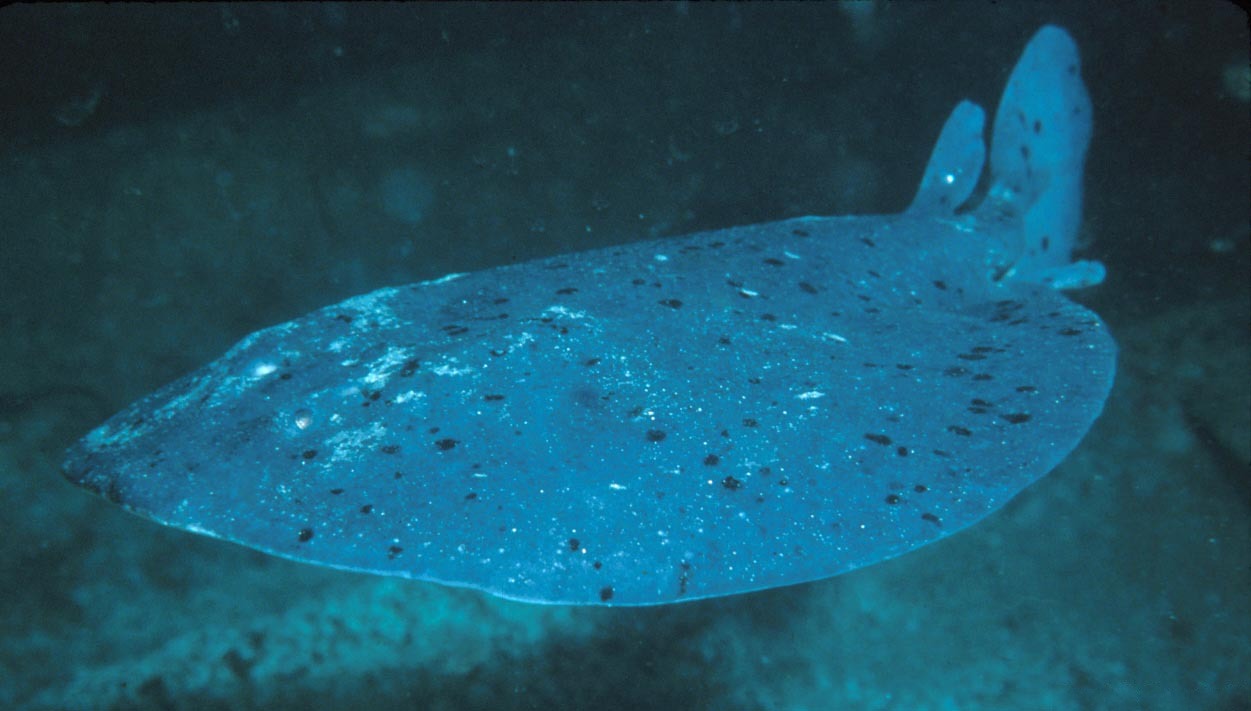- Pacific electric ray
Taxobox | name = Pacific electric ray
status = LR/lc | status_system = IUCN2.3

image_width = 240px
image_caption = In theChannel Islands National Park ,California
regnum =Animalia
phylum =Chordata
classis =Chondrichthyes
subclassis =Elasmobranchii
ordo =Torpediniformes
familia =Torpedinidae
genus = "Torpedo"
species = "T. californica"
binomial = "Torpedo californica"
binomial_authority = Ayres, 1855The Pacific electric ray ("Torpedo californica") is a species ofelectric ray native to the easternPacific Ocean . The range of the species is fromBritish Columbia ,Canada toBaja California ,Mexico , and possibly also other areas of the Pacific.The ray can reach a total length of 140 cm and a weight of 41 kg. The body is round and gray with small black spots on the dorsal side. The two
dorsal fin s are located near the tail.The rays are found in
kelp forest s and on sandy bottoms, sometimes partially buried in the sand. It feeds onbony fish , primarilyherring s andhalibut . It can stun prey using electric discharges from its electric organ. The discharges can reach 50volt at 1 kilowatt [cite journal|title=Modes of operation of electric organs|journal=Annals of the New York Academy of Sciences|date=1961|first=M.V.L.|last=Bennett|volume=94|pages=458–509|doi=10.1111/j.1749-6632.1961.tb35555.x] resulting in 20 amperes () [watt ] . It is ovoviviparous and reproduces slowly with a doubling time estimated to be between 4.5 and 14 years.The torpedo rays have been used as model organisms for
molecular biology research because of the high natural abundance of someprotein s in its electrical organs, notable examples beingacetylcholinesterase and nicotinic acetylcholine receptors.References
* Database entry includes a brief justification of why this species is of least concern
*
*
Wikimedia Foundation. 2010.
